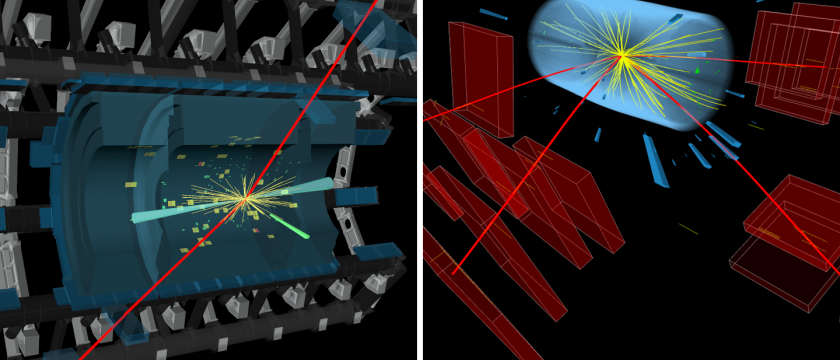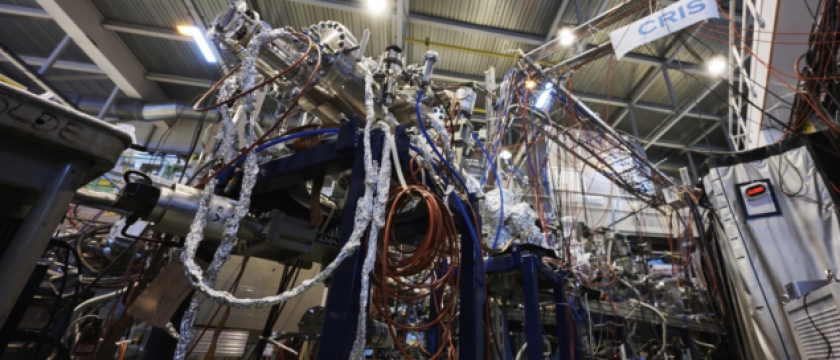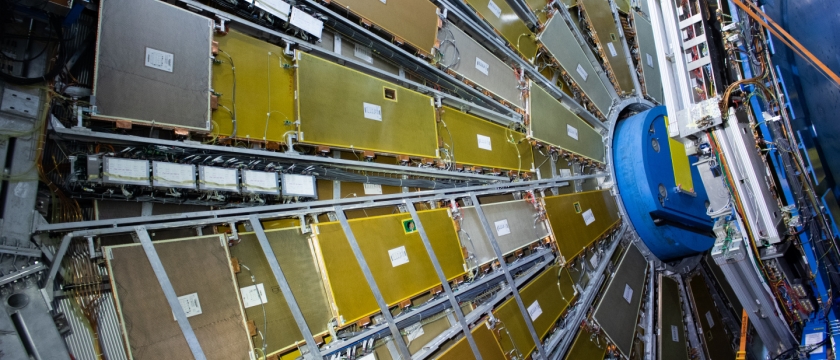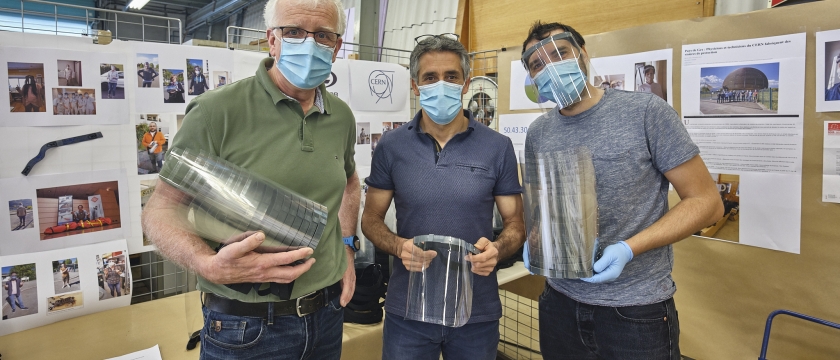Archive
Newsletter Articles

…
The ATLAS and CMS collaborations presented their latest results on new signatures for detecting the Higgs boson at CERN’s Large Hadron Collider. These include searches for rare transformations of the Higgs boson into a…
Read MORE
…
June 2020 - August 2020
The first spectroscopic study of radium monofluoride (RaF) suggests that these radioactive molecules can be used to perform high precision tests of the Standard Model of particle physics. The study was done at ISOLDE, CERN’s radioactive beam…
Read MORE
…
ATLAS entered the COVID-19 lock down on the 17th of March 2020; the closing of the activities was very fast and efficient. During the lock down, still many activities were performed remotely, among them the development of the firmware…
Read MORE
…
June 2020 - August 2020
The T2K collaboration studies neutrino oscillations. These oscillations arise from quantum mechanical interference caused by the fact that every neutrino of the type electron, muon, or tau is a combination of three neutrino mass states. The neutrino…
Read MORE
…
June 2020 - August 2020
Precise time tagging is a hot topic in High Energy Physics and in other fields. A number of detector technologies are available but there are few multi-channel front-end ASICs capable of providing time tagging in the region of 10ps. This article…
Read MORE
…
June 2020 - August 2020
With the COVID-19 pandemic, all our lives and routines have changed, at both the personal and professional level. Worklife at CERN has been impacted by an important lockdown, where we all had to face new challenges in terms of work reorganization.…
Read MORE…
April 2019 - June 2019
Following many years of R&D work, recent results from ProtoDUNE-SP, the single-phase DUNE Far Detector prototype at the CERN Neutrino Platform, now validate the Liquid Argon Time Projection Chamber (LArTPC) technology choice for DUNE providing…
Read MORE…
ASIC technology and designs are becoming increasingly complex but bring potentially huge benefits to HEP experiments (see also previous EP article "A bright future for microelectronics"). Figure 1 summarises the evolution of CMOS technologies in the…
Read MORE…
In a new paper released last month, the ATLAS Collaboration reported the observation of a single top quark produced in association with a Z boson (tZq) using the full Run-2 dataset, thereby confirming earlier results by ATLAS and…
Read MORE…
The ALPHA collaboration at CERN has reported the first measurements of fine structure effects and Lamb shift in the energy structure of antihydrogen that provide another test of comparison between antimatter and ordinary matter. The results,…
Read MORE